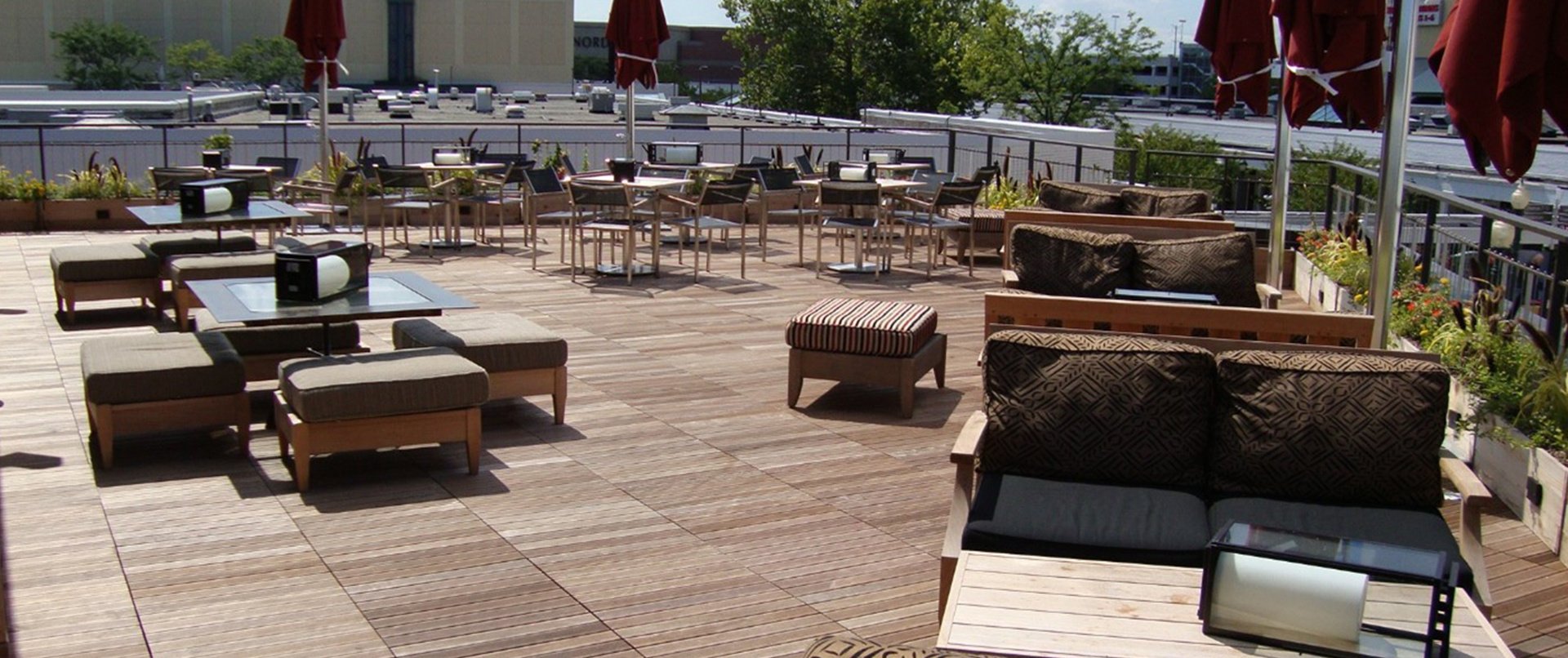The elements of biophilic design are based on the theory that having a connection to nature has a positive impact on human health and well-being.
Much of modern life is spent indoors in man-made environments that often push out nature. In addition to the environmental impact, these conditions have had a negative effect on human health. People, especially those in urban environments, have lost their connection with the outdoors.
Biophilic design seeks to restore some of that connection by using elements of biophilic design in buildings and outdoor spaces. Although many biophilic projects are sustainable, the objective of biophilic design differs from that of sustainable architecture. Biophilic design is concerned with creating built environments that foster connections between humans and nature.
What is biophilic design?
Pioneers of the theory of biophilia, Harvard biologist Dr. Edward Wilson and social ecologist Stephen Kellert, define biophilic design as:
"The deliberate attempt to translate an understanding of the inherent human affinity to affiliate with natural systems and processes — known as biophilia — into the design of the built environment."
Biophilic design attempts to connect humans with nature through the built environment. This isn't entirely new; using natural themes and nature itself to enhance the built environment has been used for centuries. However, the scientific understanding of the importance of nature to human well-being and the inclusion of biophilic design objectives in green building rating systems, programs, and standards is new.
Why is biophilic design important?
Biophilic design asserts that human health and well-being are intrinsically linked to nature. A number of studies from a variety of sectors suggest that being in contact with nature has a positive impact on human welfare.
Architecture and interior design that incorporate elements of biophilic design have a variety of physical, mental, and behavioral benefits.
The benefits of biophilic design can include:
- Enhanced physical fitness: Spaces that follow the principles of biophilic design can improve people's physical fitness by encouraging them to be more active.
- Fewer illnesses: Biophilic design promotes natural ventilation, which limits the spread of vector-borne disease agents and improves air quality, resulting in fewer illnesses.
- Reduced stress and anxiety: Elements of biophilic design have been shown to help to reduce stress and anxiety.
- Improved social interaction: Biophilic design promotes positive interactions between people.
- Reduced hostility and aggression: The benefits of biophilic design, such as reduced stress and improved interactions, can reduce hostility and aggression.
What are the elements of biophilic design?
- Plants: Using plants in built environments can help to improve air quality, provide a sense of nature, and create a more pleasant environment. Living walls add to the aesthetics of internal and external spaces and can help reduce noise levels.
- Water: Incorporating water features into built environments can help create a sense of calm. The sound of the water provides multisensory encounters with nature, which Kellert believed greatly influenced people's comfort, enjoyment, and cognitive performance.
- Light: Using natural light has both human and environmental health benefits. Exposure to natural light improves people's mental and physical health and benefits the natural environment by reducing energy use.
- Air: Natural ventilation improves air quality and can aid in maintaining a comfortable temperature. This can improve people's health and well-being and reduce emissions from mechanical ventilation.
- Animals: Incorporating animals into built environments can help maintain the natural ecosystem and offset the impact of humans on the environment. It also promotes biodiversity and provides opportunities for people to enjoy the experience of nature.
How To Incorporate Biophilic Design Elements into Your Spaces
The principles of biophilic design can be applied to new construction and existing buildings. There are several methods to incorporate elements of biophilic design into your project. You can use ethically sourced natural materials, include natural elements, and add colors and textures found in nature. Learn how to use natural designs by enrolling in continuing education courses on biophilic design and rooftop deck systems.
Architects can incorporate nature and green spaces in built environments, design spaces that create a visual link between the inside and outside, and maximize the use of natural light and ventilation. Green roofs are a popular way to include the natural world in urban environments because of their aesthetics and ability to help insulate buildings and improve cooling efficiency.
Bison Innovative Products provides products and systems to help you create unique and beautiful rooftop environments that include elements of biophilic design. If you're interested in incorporating elements of biophilic design into your rooftop project, we'd love to chat with you. Contact us today to get started.
Important Notice: Bison Innovative Products recommends that all rooftop deck systems should be installed by a licensed contractor with at least 2 years of proven experience. Plans/designs for a rooftop deck should be reviewed by a safety/structural engineer before commencing construction. The roof must be able to safely carry the static and live load weights of the rooftop deck, and any amenities added along with the appropriate density of any insulation to resist crushing and damaging the waterproof membrane. Adding items such as hardscaping features, hot tubs, or pools to a rooftop deck requires additional guidance and oversight from an engineer. Property owners should research and abide by any building codes and other regulations to obtain the required permits prior to having a rooftop deck installed. Please read all product specifications posted on Bisonip.com to review all information prior to any installation.
.png?width=100&height=100&name=BisonIP-logo-PMS425-2023%20(1).png)



